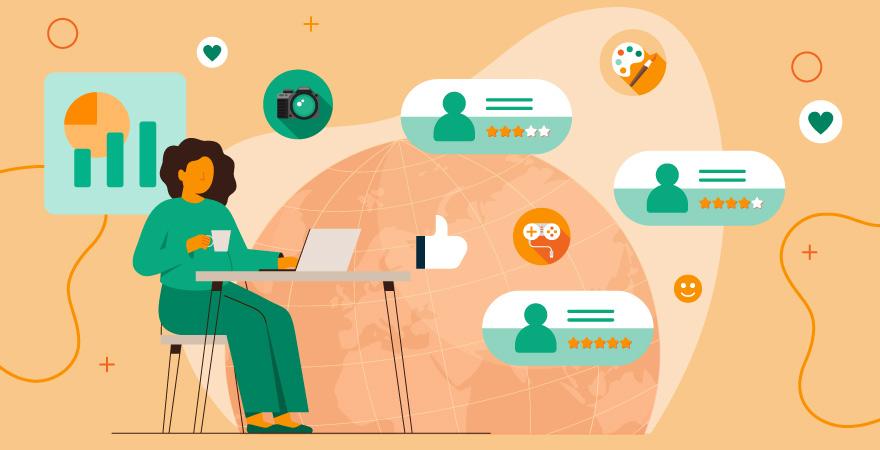Marketing personalization: Walking the line between creepy and relevant campaigns
| January 5, 2023

Where do marketers draw the line between a cute idea and just plain creepy when they’re trying to show that they know about their customers?
That’s the question at the heart of marketing personalization: How personal is too personal?
Using messaging that’s relevant to the customer is always a sound strategy. No one wants to waste precious marketing dollars on spamming the target audience with language and imagery that leaves them cold. As the analyst firm Forrester describes it, “personalization is table stakes” and “the goal is to deliver the right message to the right person at the right time and place.” That’s as true of B2B marketing as B2C. But the problem, as Tamara Grominsky, chief strategy officer at Unbounce, wrote recently, is “instead of driving conversions through creative, tailored messages, personalization more often [takes] the form of ‘Hey {f_name}!’ and nothing more.” And when I was asked in a recent interview about marketing trends I was least excited about, I had to confess that one is the idea of someone having scraped my photo from my LinkedIn profile to turn it into an animated GIF in a sales pitch. Strategies like these are gimmicky and a little on the creepy side for my taste. That’s where personalization flies or fails; it’s a question of careful judgment. According to 2017 research by Epsilon, 80% of consumers are more likely to make a purchase when brands offer personalized experiences. But according to 2019 research by Gartner, “more than half report they will unsubscribe from a company’s communications and 38 percent will stop doing business with a company if they find personalization efforts to be ‘creepy.’” The costs of getting it wrong are high. There are some great examples of personalization campaigns that didn’t overstep customers’ privacy—that struck the right balance between cute ideas and creepy intrusion—and others that risked going too far. There are practical lessons we can learn from both.
Lessons from history
Sometimes it’s worth going back to the first big example we remember of where something went wrong to remind ourselves of the lessons of history. Let’s wind back the clock to a 2012 New York Times Magazine cover story about how data-wrangling customer purchasing patterns at Target had a negative impact on a customer. According to the article, if customers bought certain products, they were highly likely to be pregnant, so coupons for maternity and baby products were duly dispatched to their home addresses. For the father of one teenage girl, this reportedly first prompted him to complain to their local store about the inappropriate coupons … before apologizing when he discovered his daughter was, in fact, pregnant. The moral of the story is about the line brands can cross between the personal and the private. At best, instances like these represent how good intentions can go awry. At worst, it’s possible that companies can use sales information about health and well-being in a way that customers may not have consented to. The context of today’s personalization campaigns will be different, but I believe the questions will be the same. What information do you have about the customer? How did you acquire it? Do you have their consent to use it in the way you intend to reach them? The practical tip here is to have clear data and compliance protocols about how your personalization campaign will work.
Predicting the future
Let’s call them what they are: Netflix, Amazon and Spotify are personalization engines. Sure, there’s content, but they are also great examples of machine learning engines that understand consumer preferences well enough to predict what they may want next. You watched, read or listened to this: You’ll probably like this next. By using consumer data in this way, companies can become problem-solving, time-saving, effort-easing engines. And if they save me time and effort and solve the problem of having to think too hard, they win my loyalty. Spotify’s end-of-year Wrapped report adds a layer of gamification to this personalization by revealing your annual listening habits and offering a game based on your listening. But the practical takeaway here is that personalization should aim to anticipate and offer relevant solutions to a customer’s problems (even relatively trivial ones like determining which new series to binge-watch). It’s not about asking questions. You already know the customer; that’s the point.

Building relationships
In my opinion, one of the most successful, least intrusive, and enduring personalized marketing campaigns of the last generation has been the “Share a Coke” campaign for Coca-Cola that Ogilvy created and originally launched in Australia in 2011. One of the least commented-on aspects of the campaign is its success in drawing customers closer to the brand through social engagement and the rise in Coke’s social following (an extra 25 million new Facebook followers for Coca-Cola in the campaign’s first year). The practical tip here is to consider personalization as a relationship-building strategy rather than a broadcast campaign. If you are communicating with someone on a personal level, you aren’t just transacting, are you? What’s the engagement flywheel that you’re creating from the first personalized communication you send out? You might be campaigning at scale, but the personalized communication is one on one.
Judging the line
Communication is about building relationships. With marketing personalization, the dividing line between relevance and overreach is intrusion. When it comes to saying something interesting, it’s about solving my problem rather than asking me a question. If you are thinking about pitching me, please don’t scrape my LinkedIn page.
Originally published on Forbes.
